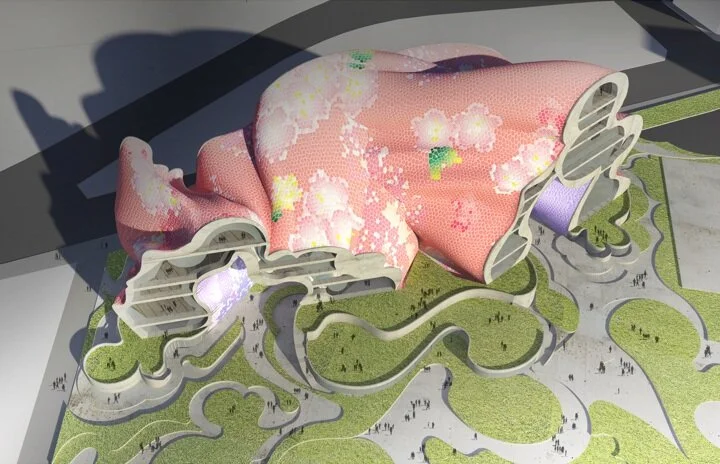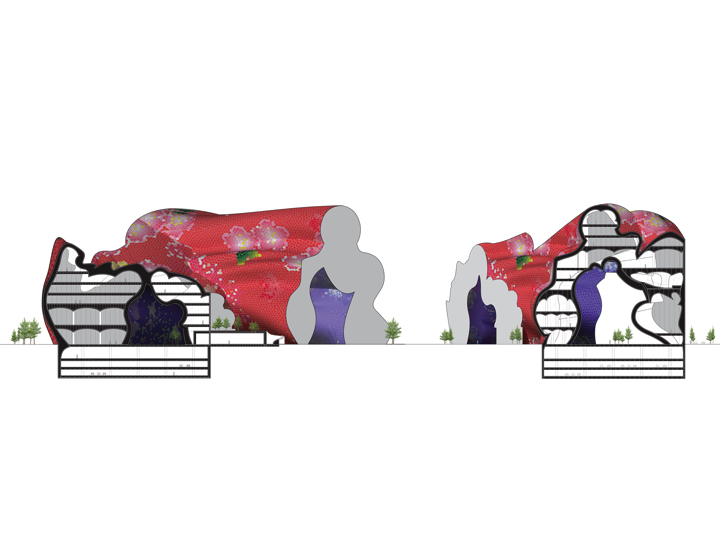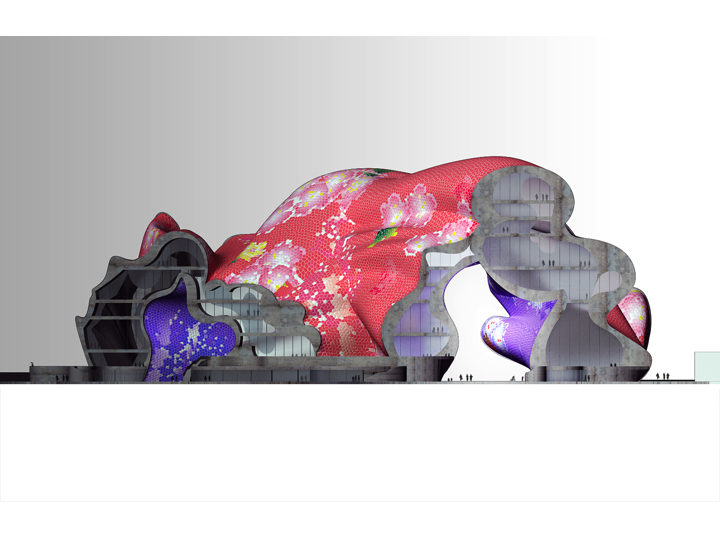TAICHUNG CITY CULTURAL CENTER
Designers: Florencia Pita & Jackilin Hah Bloom
Project Team: Ana Munoz, Emily Chen, Erin Lani, Ida Hammarlund, Kirsten Wehrenberg-Klee, Kyle Onaga
Taichung City, Taiwan. May 2013
International Competition
This proposal for the Taichung City Cultural Center is a singular, landmark building, which encompasses both the Taichung Public Library and the Taichung Fine Arts Museum. In response to Taichung City Government’s initiative to develop a notable entryway to Taichung Gateway Park, we propose a building that formally yields a “gateway” into the new park. Much like natural occurring openings between large rock formations, grand breezeways or tunnels are proposed to separate the two volumes of the library and museum. Through a series of studies and manipulations of historical archway precedents, a three-dimensional form of the tunnels was generated. The volumes of the library and museum extend to the boundary of the site and are truncated on three sides. The single flat facade along Park Avenue represents the building as a solitary cultural hub, whereas the other two flat facades which face the park, define the museum and library as separate entities. Also in contrast to the street facade, the majority of the glass on the museum and library facades are translucent as well as recessed to allow for shade from sun exposure coming from the south of the park. To complement the design of Taichung Gateway Park, the same language of curves that detail the concrete edge of the flat facades, define the shape of the lower shop and cafe buildings as well as the ground paving and landscape around the site. Inspired by the artist Michael Lin’s use of floral textiles in urban settings, we developed a graphic from the national Taiwanese flower to carpet the undulating roof. The roof is made up of colored metal or solar panels, that act as pixels of a complete image. This imagery is used to evoke a sense of nostalgia for Taiwanese history through drawing from traditional floral fabrics. The image and coloration also provides a dramatic visual impact of the building from afar and from above - especially when seen from the roof garden of Sou Fugimoto’s Taiwan Tower building.









